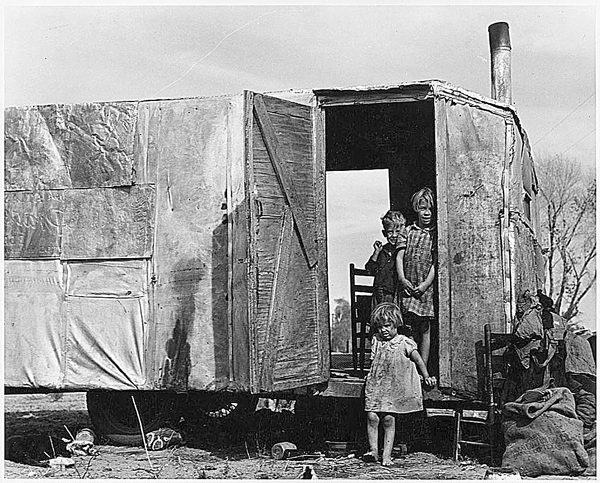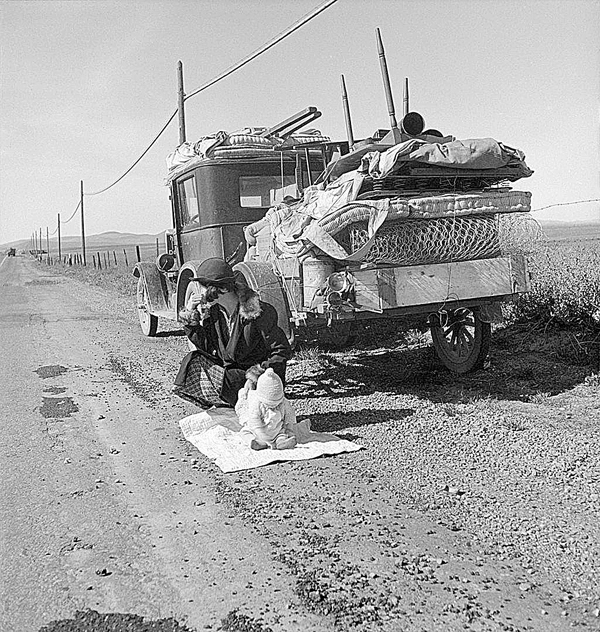
Ken Springer
American Nomads
Then and Now
Part One
Science tells us that our proximal reality is based upon our five senses – sight, sound, taste, touch and smell. Altogether, these senses allow our brain to make sense of our immediate physical world.
On the other hand, our greater reality, that which exists beyond our personal sphere, is primarily predicated upon what we read, who we talk to and what we talk about, and our engagement with the outside world through social media, travel, news sources and so on.
Still, much escapes our notice, much that doesn’t become part of our reality until we stumble upon it and can’t ignore it.
My friend, Mark Reed, and I were returning to the “Lower 48” after hiking the Chilkoot Trail from Alaska into the Yukon. In the early fall of 1985, when we traveled the Alaskan and Cassiar Highways, travelers were welcome to camp at the occasional roadside rests. This invitation extended to providing free firewood at each site.
Since campgrounds and towns were few and far between, we took full advantage of this unique aspect of Northern hospitality. On one such occasion, we had set up camp, finished dinner, and were about to sip on a bit of distilled beverage when a drab rust-cratered former school bus pulled into the rest stop.
Within minutes of arriving, the occupants began disembarking the faded grey relic. It soon became apparent that this was a family, one that, as far as we could tell, was comprised of a middle-aged father, a mother who only made her presence known at the opaque kitchenette window, and two stalwart late-teen daughters.
The work-worn father set about chocking the wheels while the daughters hauled firewood back to the bus from a stack of wood near the picnic shelter. Soon there was smoke rising from a metal stovepipe jutting from the roof about midway down the length of the bus. That was the last we saw of them until early the next morning.
One of the young women came out of the bus while Mark and I were breaking camp. She returned a large armful of firewood to the woodpile, followed by several more trips. It occurred to Mark and me that this single act said a lot about the character of these folks.
They were honest and thoughtful – they could have easily just taken the firewood with them.
They seemed in a hurry to get back on the road, but in a brief and polite conversation with the young woman, she revealed that the family had worked the summer in one of Alaska’s many fish canneries. Now the old bus was headed south for agricultural jobs that would get them through the winter months.
This was an American family of migrant workers, an unusual situation to encounter in 1985 when most migrant workers were coming up from Mexico.
After the old bus rumbled out of sight, Mark and I had arrived at the very same impression of this family on wheels. They looked as though they had stepped right out of Steinbeck’s The Grapes of Wrath. This revered book is a fictional account of one of the most tragic and heartbreaking events in American history, the mass exodus of destitute Americans fleeing the Dust Bowl.
We had just witnessed a lifestyle harkening back to the later years of the Great Depression. A time when thousands of tenants and farm owners forced off their farms by factors incidental to the Dust Bowl had no other options than to hit the road or starve.
For eight years in the 1930s, severe drought and relentless winds stripped much of the plain states of its fertile topsoil. The massive sandstorms destroyed thousands of homes and left farmland barren and cropless.
Unable to make mortgage payments, farmers were evicted from their homes in numbers that stagger the mind.
Altogether some 500,000 people in the affected area became homeless, many hundreds died from dust-induced pneumonia and malnutrition. Once most of the farmers went bankrupt, the domino effect it had on the regional economy rippled through all sectors of the business community.
Overnight, professionals and white-collar workers alike lost their jobs. Schools, factories, and businesses closed their doors. The Dust Bowl served only to intensify the already catastrophic economic impact of the Great Depression.

Yet, with rumors spreading about agriculture work in the south, millions of people loaded up their “jalopies” with family and a few belongings and headed for states already suffering from the depression. An estimated 3.5 million people left the plain states in less than a decade for areas where they might find work.
For most, they would cross the deserts and mountains in unreliable vehicles with little money or food. They were living on hope alone, the hope of finding the “promised land” but, instead, finding only more misery and hard times when they arrived.
These brave and desperate victims of nature and economy would often arrive in places like California only to be greeted with derision and violence. These unfortunate folks were called “Okies” by the locals, a derogatory term even today.
It is both foolish and unwise to think that such calamities cannot happen again. They may not occur on the same scale as the Dust Bowl. Still, economic failures are once again forcing many of our fellow Americans to “hit the road.”
Yet, few of us are aware of this growing trend.
For a variety of reasons, many of our citizens are finding it necessary, and in some cases desirable, to, once again, carry their homes with them. They are heading out on the nation’s highways in droves, searching for a better life than what they left behind.
The resurgence of the American nomad is again a fact of life in the U.S. and Canada. As one woman living in an RV said to me a few years ago in a Nevada campground, “When you can’t make a go of it, at least you can still go.”
In next week’s installment of the Watoga Trail Report, we will examine why so many Americans are selling their homes and becoming what are euphemistically called “full-time campers.”
In his book, Grapes of Wrath, Steinbeck uses many clever metaphors for the characters in this classic story of the Great Depression era. What follows is an apt summary of the struggles and perseverance of the Joad family.
A land turtle navigates through a dry patch of ground toward a slanted highway embankment full of oat beards and foxtails. Resolute and unswerving, the turtle fights its way up the slope to the highway and begins to cross the hot pavement.
A speeding car swerves onto the shoulder to avoid the turtle. Moments later, a truck purposefully clips the shell of the turtle, sending it spinning to the side of the highway, landing on its back. Eventually, the turtle rights itself, crawls down the embankment, and continues on its way.
Until next week,
Ken Springer
Ken1949bongo@gmail.com


